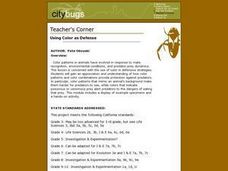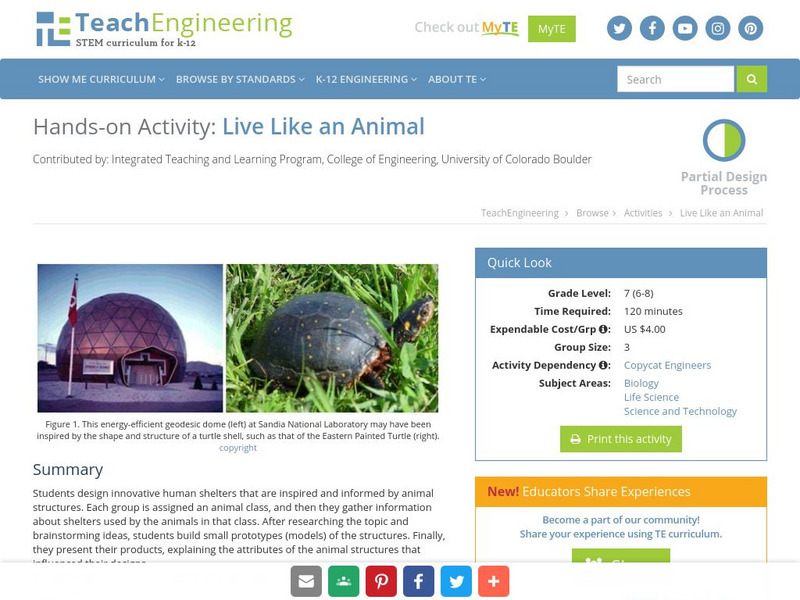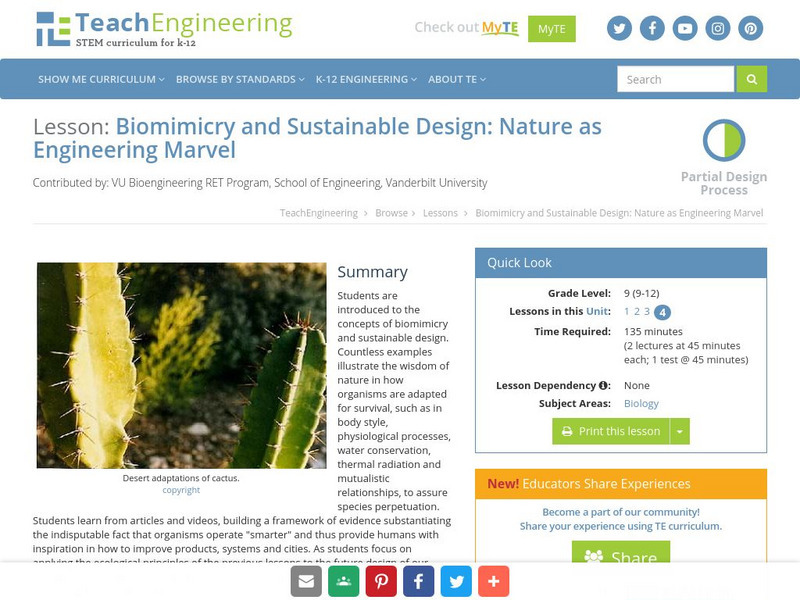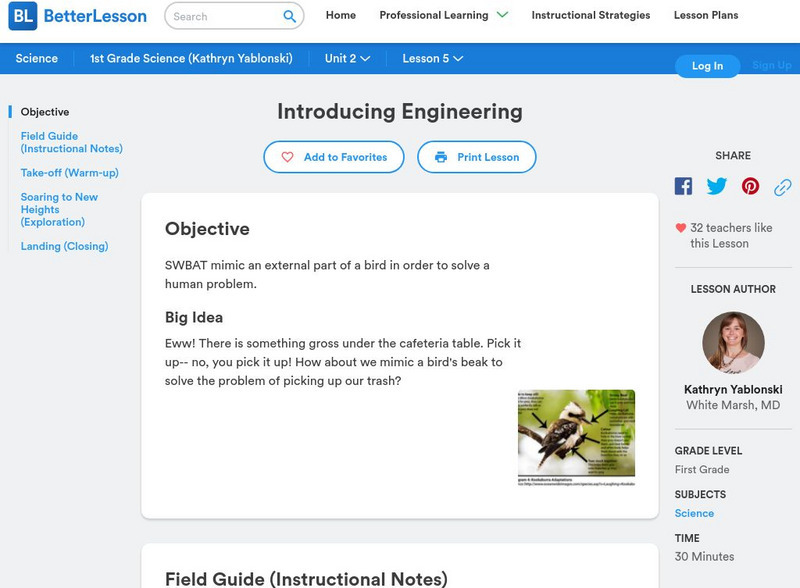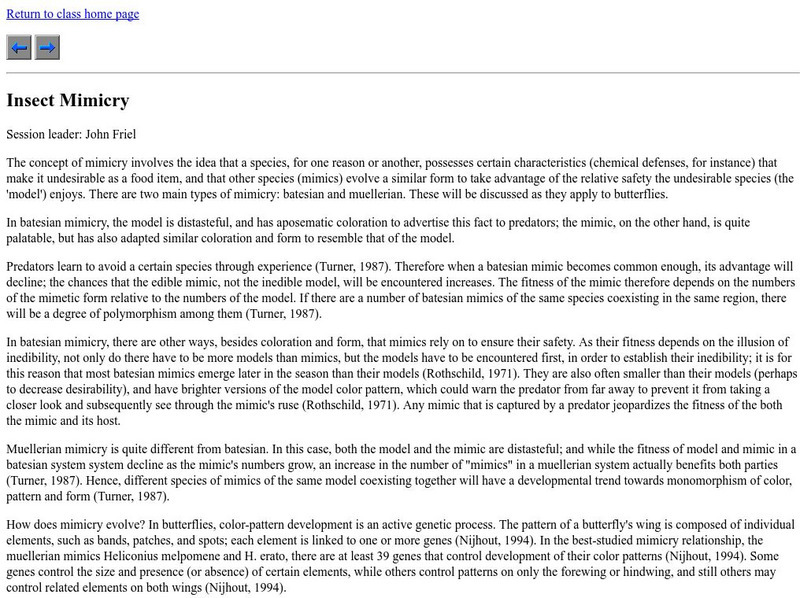Virginia Department of Education
Adaptation and Evolution
Um may be the atomic symbol for confusion, but it won't be needed in this lesson. Scholars rotate through seven stations completing experiments, hands-on activities, writing exercises, and analysis. Stations include material on...
Curated OER
Raven Chapter 54 Guided Notes: Community Ecology
Providing a sweeping overview of population and community interactions, this ecology worksheet gets learners thinking. They differentiate between habitat and niche, describe and give exemplars of various animal and plant defenses,...
K12 Reader
Hide and Seek
Why do certain animals look the way they do? It could be because they have developed camouflage. Kids can read up on camouflage and mimicry and then respond to five questions related to the content of the passage.
Curated OER
Blending Butterflies
Students create camouflage butterflies. In this camouflage lesson plan, students read about the different types of camouflage. Each student in the class chooses a spot in the classroom and creates a camouflaged butterfly. They hang up...
Curated OER
Mimicry: An Example of Adaptation
Students are able to explain the relationship between adaptation and ability for survival and reproduction. They are able to give examples of a series of adaptations that would support the idea that evolution is a series of minor...
Curated OER
Camouflage
Third graders collect insects and various bits of the insects' habitats in order to develop an understanding of how camouflage makes the insect fit to survive in its environment.
Curated OER
Using Color as Defense
Young scholars explore mimicry and crypsis, participate in hands-on predator-prey activity, and practice calculating averages and graph results in histogram.
Curated OER
Adaptation and Mimicry - Biology
Students compare and contrast adaptations involving camouflage, warning coloration, and mimicry. They explain the relationship between adaptation and ability for survival and reproduction. Students define Batesian and Mullerian mimicry...
Curated OER
Mimics Survive -- Camouflaged Reptiles
Students examine mimicry as a survival strategy in repiles. They examine examples of the Mexican milksnake and the coralsnake in attempt to distinguish the differences in them. They discuss other species that use mimicry.
McGraw Hill
The Mc Graw Hill Companies, Inc.: Adaptation
Evolution, natural selection, sexual selection, coevolution, convergent evolution, mimicry, and coloration, are the topics examined in this thorough site. Assess your comprehension of the material presented by delving into the learning...
PBS
Pbs Learning Media: Seeing Through Camouflage
This interactive feature from the NOVA: "Leopards" Web site presents a wide variety of ways in which animals use coloration to their advantage.
TED Talks
Ted: Ted Ed: Why Is Yawning Contagious?
*Yaaawwwwwn* Did just reading the word make you feel like yawning yourself? Known as contagious yawning, the reasons behind this phenomenon have been attributed to both the physiological and psychological. It's been observed in children...
PBS
Pbs Learning Media: Mimicry: The Orchid and the Bee
In this photograph from Oxford Scientific Films, a horned bee attempts to mate with an Ophrys orchid, which has evolved to resemble a female bee.
PBS
Nova: Seeing Through Camouflage
See if you can identify the type of camouflage shown in 12 different animals. Types of camouflage include mimicry, disguise, disruptive coloration,and concealing coloration.
TeachEngineering
Teach Engineering: Live Like an Animal
In this activity, students design an innovative human shelter that is inspired and informed by an animal structure. Each group is assigned an animal class, and they gather information about shelters used by the animals in that class....
TeachEngineering
Teach Engineering: Biomimicry: Echolocation in Robotics
Students use ultrasonic sensors and LEGO MINDSTORMS NXT robots to emulate how bats use echolocation to detect obstacles. They measure the robot's reaction times as it senses objects at two distances and with different sensor threshold...
TeachEngineering
Teach Engineering: Copycat Engineers
This lesson introduces students to the idea of biomimicry, or looking to nature for engineering ideas. Biomimicry involves solving human problems by mimicking natural solutions, and it works well because the solutions exist naturally....
TeachEngineering
Teach Engineering: Nature Is an Engineering Marvel
This lesson introduces students to the concepts of biomicry and sustainable design. Students will learn to illustrate the wisdom of nature by demonstratiing how organisms adapt to their environment.
Better Lesson
Better Lesson: Introducing Engineering
There is something gross under the cafeteria table. Do you pick it up? Gross! How about we mimic a bird's beak to solve the problem of picking up our trash? This lesson models walking through the first few steps of the Engineering Design...
TryEngineering
Try Engineering: Biomimicry in Engineering
This lesson plan focuses on the concept of Biomimicry and young scholars learn how engineers have incorporated structures and methods from the living world in products and solutions for all industries. Students then work in teams to...
Sheppard Software
Sheppard Software: Walking Sticks
This site gives an in-depth description of a walking stick, including its behavior, appearance, reproduction, and classification. The site includes photos and illustrations and an interactive quiz to test your understanding.
Other
M. Tevfik Dorak, m.d., ph.d.: Mimicry
Describes what mimicry is. Describes the different kinds of mimicry found and by whom.
University of Arizona
University of Arizona: Insect Mimicry
At this site from the University of Arizona, the two main types of mimicry, batesian and muelleries are discussed as they apply to butterflies. Discusses what each type is and how they are different.
Morning Earth
All Lives Transform: Adaptation: Mimicry
Students examine the Biology topic of adaptation. The tutorial includes definitions, examples, and pictures on mimicry.








